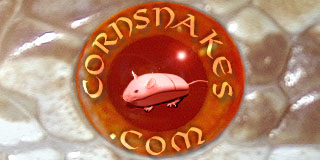Shiari
Blutterer
So, I've been rolling this idea around in my head for a while, and decided that I *do* want to do this. I am going to start a line bred purely for temperment and health. If I end up with a line of purely normal corns, that doesn't matter to me. I figure it should be an interesting task.
The hatchling I kept from my clutch last year is actually a great example of what I want to breed for. She's never struck, coiled, or even tail rattled. She's currently fully into her blue, can't see worth a darn... and didn't even try to dart away when I picked her up this morning.
So I figured that I should try to create a fairly objective way of evaluating my snakes for temperment so that out of the clutches I produce, I can keep back the 'sweetest' tempered of the lot.
Each animal will be first evaluated for health upon first shed, checking for obvious deformities and spinal kinks. Any with such will be automatically removed from consideration for breeding. They will then be evaluated in response to the stimuli of being examined, given a score of 0 to 3 for defensiveness and flightiness.
Defensiveness- 0 = no defensive behaviours. 1 = tail rattling. 2 = S-coiling. 3 = striking/biting.
Flightiness- 0 = none. 1 = short motions to avoid capture. 2 = extensive attempts to avoid capture. 3 = extensive attempts to avoid capture, musking, flailing, etc.
Feeding response will also be closely monitored, and any animal that will not eat on its own by the end of the first month will not be considered for breeding. Equally, bites that occurred from a strong feeding response rather than defensiveness (as evidenced by continued contact and obvious 'gonna eat you!' attempts) will NOT be counted against a hatchling.
Each week before each feed the hatchlings will be re-evaluated. They will only be handled immediately prior to feeding to help prevent false numbers from acclimatization to handling, and each handling session will be brief.
Hatchlings will be evaluated weekly for 3 months, including once monthly checks for any kinks that may not have been apparent after the first shed.
Color morph will not be taken into account for choice of holdbacks.
That's the basics for the moment... so... thoughts, ideas for other criteria to try to evaluate?
The hatchling I kept from my clutch last year is actually a great example of what I want to breed for. She's never struck, coiled, or even tail rattled. She's currently fully into her blue, can't see worth a darn... and didn't even try to dart away when I picked her up this morning.
So I figured that I should try to create a fairly objective way of evaluating my snakes for temperment so that out of the clutches I produce, I can keep back the 'sweetest' tempered of the lot.
Each animal will be first evaluated for health upon first shed, checking for obvious deformities and spinal kinks. Any with such will be automatically removed from consideration for breeding. They will then be evaluated in response to the stimuli of being examined, given a score of 0 to 3 for defensiveness and flightiness.
Defensiveness- 0 = no defensive behaviours. 1 = tail rattling. 2 = S-coiling. 3 = striking/biting.
Flightiness- 0 = none. 1 = short motions to avoid capture. 2 = extensive attempts to avoid capture. 3 = extensive attempts to avoid capture, musking, flailing, etc.
Feeding response will also be closely monitored, and any animal that will not eat on its own by the end of the first month will not be considered for breeding. Equally, bites that occurred from a strong feeding response rather than defensiveness (as evidenced by continued contact and obvious 'gonna eat you!' attempts) will NOT be counted against a hatchling.
Each week before each feed the hatchlings will be re-evaluated. They will only be handled immediately prior to feeding to help prevent false numbers from acclimatization to handling, and each handling session will be brief.
Hatchlings will be evaluated weekly for 3 months, including once monthly checks for any kinks that may not have been apparent after the first shed.
Color morph will not be taken into account for choice of holdbacks.
That's the basics for the moment... so... thoughts, ideas for other criteria to try to evaluate?
Last edited:
